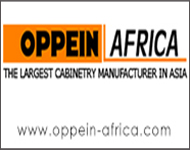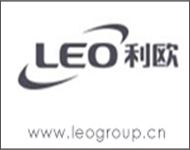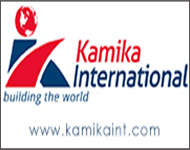Headlines
- Groundbreaking Ceremony Marks Start of Sh50 Billion MTRH Construction Project
- TANROADS-World Bank Alliance Powers Massive Road and Airport Upgrades Across Tanzania
- Kenya Breaks Ground on Sh5 Billion China-Kenya International Commerce Center in Nairobi
- Construction Begins on $2.15 Billion Uvinza–Musongati Railway Project
- Kenya Secures Chinese Funding for Sh5 Billion Nithi Bridge Reconstruction
- Construction Nears for ELCT Facility Backed by Samia’s 250 Million Boost
- KeNHA Kicks Off Construction of Major Kenya-South Sudan Road Project with AfDB Support
- Tanzania Government Allocates 100 Billion Shillings for Bridge Constructions in Lindi
- $46 Million Deal Signed for Crucial Isiolo-Mandera Road Construction Project
- Tanzania Government Set to Sign Agreement for Dodoma Stadium Construction
Ethiopia: Authority Launches Construction of U.S.$700 Million Expressway
The 10,000km highway is designed for traffic levels forecast for the next 21 years
Ethiopian Roads Authority began construction of the Modjo-Hawassa Expressway, which, upon completion in five years, will have a million new trees flanking it on both sides.
The official launch of construction of the first four phases from Modjo to Meki by Prime Minister Hailemraim Desalegn on December 10, 2015, was the culmination of a four-year search for financing. The entire project is estimated to cost 700 million dollars.
Chinese Railway No.7, one of the 30 subsidiary companies of the state-owned China Railway Engineering Corporation (CREC), was awarded the construction contract for the first segment. CREC was the largest construction company in the world in 2012, according to 2014 data compiled by Fortune Global 500. The contract signed in November 2015, was for 3.6 billion Br. Financing for this section has been committed by the African Development Bank (AfDB).
The other three phases are from Meki to Ziway, Ziway to Arsi Negele and Arsi Negele to Hawassa.
The full length of the Expressway was designed by Techniplan International Consulting, an Italian Engineering firm, and reviewed by Ethio-Infra Engineering Plc, a local company. Ethio-Infra had designed the 72km Mehal Meda-Alem Ketema road for 3.5 million Br in 2011. In 2013, it was also involved in social and environmental impact assessment and resettlement policies for Modjo-Meqi and Nekemte Bure roads, respectively.
Construction of the four phases will affect thousands of households and persons, although there are discrepancies in the figures given in the Updated Environmental & Social Impact Assessment document. The total number of households to be affected by the entire project is either 3,457, as stated in the report, or 2o,950, the figure obtained by adding those for categorized as partially affected and totally displaced. Similarly, for the Arsi Negele-Hawassa section, the total could be either 853 or 229. Partially affected people include those losing strips of farm land, but able to continue living with the remaining land holding after being compensated for loss of crops, trees and forgone benefits, according to the study.
"We are going to have a substantial amount of property and number of people to be resettled," which a source from ERA explained.
In order to accommodate the growing traffic along the line, the Expressway will be 100m wide. The assessment document has looked at the traffic separately for Modjo-Ziway, Ziway-Shashemene and Shashemene-Hawassa sections. Daily traffic on the three sections of the existing road in 2010 was 3,612, 3,541 and 4,048 vehicles, respectively. In 2018, with the new expressway, these figures are expected to increase to 4,587; 3,125 and 4,420. Remarkable growth is forecast for 2027 and 2037, with the number of vehicles using the Modjo-Ziway section expected to reach 11,271 and 27,990, respectively. The forecast for the Ziway-Shashemene section in those years is 7,674 and 19,047 and for Shashemen-Hawassa 11,153 and 28,413.
The Expressway, which is connected with the Addis-Adama Expressway, is also part of the 10,000km highway traversing the length of the continent from Cairo in the north, to Gaborone and Cape Town in southern Africa.
Currently, the three sections are at different stages of construction. For the Meki-Ziway section, Korea EXIM Bank extended a 228 million dollar loan to be repaid in 40 years, with a 15-year grace period. This section was awarded to keangnam Enterprise Limited, a Korean company. ERA later revoked the licence after the bank informed ERA that the contractor was bankrupt. That bid is now under another selection process.
The last section of the Expressway, the 57Km Ziway-Arsi Negele section, has got a credit approval for 370 million dollars from the World Bank Group. It is a concessional agreement with a maturity date of 38 years and a grace period of six years. The bidding for this section is under preparation.
For the last segment, the tender for the Arsi Negele to Hawassa road, was announced on June 4, 2015. Loan financing is yet to be secured for this project, with the Chinese EXIM Bank expressing interest with conditionality, offering to lend if the contract goes to a Chinese company.
It will take three years to complete this particular section.
The Expressway will not be a toll road until all sections are completed. Vehicles will have free access as each section is completed until then, says Araya Girmay, director general of ERA.
If all goes as planned, the Expressway will be the first flagship project that will be implemented with support from both Washington and Beijing. Four of the financiers have already signed a Memorandum of Understanding (MoU).
Source :http://allafrica.com/
Posted on : 14 Dec,2015
Buildmart is Africa's leading directory and market news website for the building and construction industry | Kenya | Tanzania | Rwanda | Ethiopia
Exhibitions In Africa
- 27th Buildexpo Kenya 2026
KICC, Nairobi, kenya
08 - 10, July 2026 - 11th Afriwood Kenya 2026
KICC, Nairobi, kenya
08 - 10, July 2026 - 11th LightExpo Kenya 2026
KICC, Nairobi, kenya
08 - 10, July 2026 - 10th Minexpo Africa 2026
KICC, Nairobi, Kenya
08 - 10, July 2026 - 27th Buildexpo Tanzania 2026
Diamond Jubilee Expo Center, Dar-es-Salaam, Tanzania
23 - 25, Sep 2026 - 10th Afriwood Tanzania 2026
Diamond Jubilee Expo Center, Dar-es-Salaam, Tanzania
23 - 25, Sep 2026 - 10th LightExpo Tanzania 2026
Diamond Jubilee Expo Center, Dar-es-Salaam, Tanzania
23 - 25, Sep 2026 - 10th Minexpo Tanzania 2026
Diamond Jubilee Expo Center, Dar-es-Salaam, Tanzania
28 - 30, Oct 2026





















